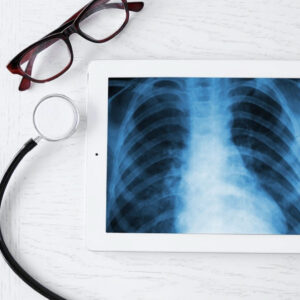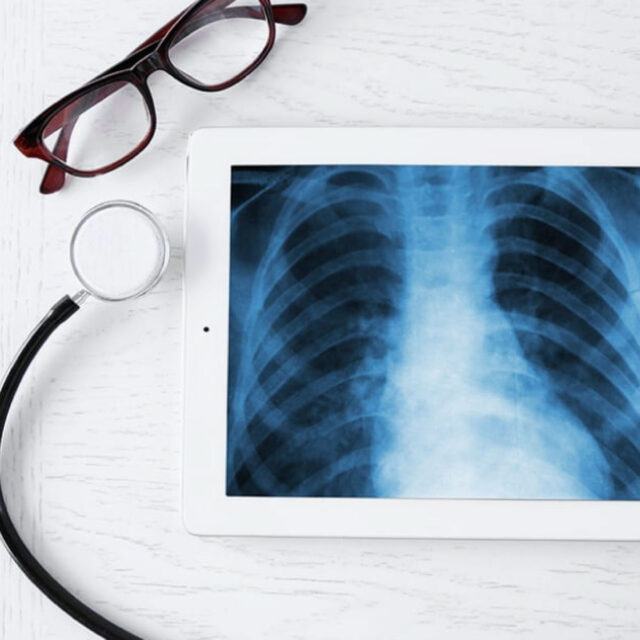During rainy season, the weather fluctuates often with more humidity, a thriving condition for all kinds of germs. Sprinkles of rain raise the risk of getting sick, especially with respiratory infections. So, we should be prepared to handle and prevent them from our airway passages.
Types of Respiratory Ailments

1) Acute Rhinopharyngitis: Common Cold
Acute Rhinopharyngitis or better known as the common cold is one of the most common types of respiratory infection. Several strains of viruses can contribute to the common cold, especially during the rainy season, winter or when seasons change. Anyone can become infected. Young children can become infected several times during the year. Adults will get less infection because we will have developed immunity. On average, children can get infected 6 – 12 times per year, while adults can have the common cold 2 – 4 times per year. It is not very severe and can go away by itself within a few days because of viral infection. Thus, treatment is aimed at relieving the symptoms.
How It Spreads
There are over 100 different viruses that can cause the common cold, most belong to the Coryza virus family, such as Rhinovirus and others that can be transmitted through runny nose, saliva, and sputum. By sneezing or coughing, an infected person can spread droplets or aerosols to another person who is in proximity or touched contaminated surfaces and then rubbed their eyes or nose. The infection can spread from an asymptomatic person up to within 1 – 2 days after symptoms appear.
Frequent Symptoms
When the virus enters the nasal passages, it will adhere to and enter a cell in the lining and being to multiply. Once that host cell has been destroyed, inflammation of the nasal passages begins and manifests as swelling and redness. Runny nose will soon follow. Incubation time takes 1 – 3 days (10 – 12 hours on average) before symptoms appear.
Symptoms of the common cold include:
- Stuffy nose
- Clear runny nose
- Coughing
- Sneezing
- Sore throat
- Hoarseness
- Low-grade fever
- Slight headache
Adults may show very little symptoms, such as stuffy nose and runny nose (except for people with pre-existing respiratory problems). Symptoms usually last 2 – 5 days, except runny nose may persist 10 – 14 days.
Self – care During Common Cold Infection
- Since the common cold is caused by viral infection, most people will try to relief their symptoms by taking antihistamine or fever reliever until they get better. Antibiotics are not necessary since it may lead to drug resistance.
- Get enough rest.
- Drink lots of water (should be warm water).
- Keep your core body temperature warm.
- Eat warm food.
- Avoid sneezing or blowing nose too harshly since it may cause germs to enter the sinus and cause further infection.
- When sneezing or coughing, use a handkerchief to cover nose and mouth.
How To Prevent the Common Cold
- Avoid coming into close contact with an infected person. Reduce contact by not sharing personal items. If unavoidable, wash hands thoroughly after contact and do not rub eyes and nose.
- Get enough rest and exercise regularly.
- Avoid coming into contact with an infected person. Avoid crowded area during an outbreak.
- Flu shot may not prevent the common cold because it is caused by different strain of virus.
When To Seek Medical Attention
- When mucus discharge (nasal or sputum) is greenish or yellowish
- Earache or ringing in the ears
- Severe headache
- High fever
- Wheezing
Please visit your doctor to determine possible complication if you have persistent high fever and body ache. It could be the flu instead of the common cold.
Complications
- People who have common cold may also have coinfection with bacteria causing thicker and yellowish or greenish nasal and phlegm discharges.
- Sinusitis, tonsilitis, and ear infection can occur from bacterial infection as well.
- Conjunctivitis
- Bronchitis or pulmonary infections
- Patients with asthma or COPD may have extreme breathing difficulty.

2) Influenza
Influenza is an infectious disease that can be highly contagious from time to time. It is caused by the influenza virus that tends to multiply during the rainy season or winter. It can spread worldwide causing about 15% of the world population to become infected. Anyone, especially children, can become a victim. Older adults may have more severe symptoms if infected. Some may suffer only high fever, coughing, and body ache, while others may also have pneumonia as well. Medication to relief symptoms can manage some patients, while antiviral medication may be necessary in patients with severe symptoms. Influenza vaccine works really well to alleviate severity.
How It Spreads
There are several types of influenza virus:
- Influenza A virus causes 80% of all infections and is the leading cause of an epidemic.
- Influenza B virus is the next common type.
- Influenza C virus is less severe and not very infectious.
The virus spreads through nasal discharge, saliva, and sputum. By sneezing or coughing, an infected person can spread droplets or aerosols to another person who is within close proximity or touched contaminated surfaces and then rubbed their eyes or nose. The infection can spread from an asymptomatic person up to within 3 – 5 days after symptoms appear, while others can spread the virus while they remain asymptomatic.
Frequent Symptoms
Once the virus enters the respiratory airway, it takes 1 – 7 days for incubation (2 -3 days on average) before symptoms appear. Symptoms include:
- Acute high fever (39 – 40 degrees Celsius)
- Headache
- Eye ache
- Muscle and bodily ache
- Fatigue
- Some runny nose, coughing, sneezing, sore throat, clear mucus, and bronchitis
- Some may have digestive symptoms such as loss of appetite, loose stool, nausea, vomiting
Symptoms will go away on their own within 1 – 2 weeks in most people who do not have complications.
Complications
Although most people will be cured without complications, some conditions that can muddle patients include
- Pneumonia or bronchitis. If severe, it may lead to heart failure.
- Dehydration from fever, less fluid intake, or vomiting.
- Myocarditis or pericarditis (less common).
- Encephalitis or meningitis (less common).
- Patients with asthma or COPD may have more breathing difficulty.
Groups with High Risk of Complications
Patients at risk of complications are
- Patients over the age of 65 years old or children younger than 2 years old
- Patients with chronic conditions, such as respiratory disease, heart, kidney, or diabetes
- Patients who are immunocompromised, such as HIV/AIDS infection, cancer, SLE, etc.
- Children under the age of 18 years old who took aspirin for a long period of time
- Pregnant women or patients with obesity
Self – care During Influenza Infection
- Since the common cold is caused by viral infection, most people will try to relief their symptoms by taking fever reliever, antihistamine, or cough syrup until they get better. Antibiotics are not necessary since it may lead to drug resistance.
- People who have high risk or severe symptoms may be considered for antiviral medication.
- Get enough rest. Drink lots of water (should be warm water). Keep your core body temperature warm. Rest in well-ventilated area.
- When sneezing or coughing, use a handkerchief to cover nose and mouth or wear a mask. Wash hands often.
- Young children with high grade fever should be periodically wiped down with wet towel to avoid seizure. Use room temperature water or warm water to wipe down. Do not use cold or iced water.
- Avoid contact with immunocompromised people, such as children, elderly, patients with chronic health conditions, or patients who are taking immunosuppressants.
How To Prevent Influenza Infection
- Avoid coming into close contact with an infected person. Reduce contact by not sharing personal items. If unavoidable, wash hands thoroughly after contact and do not rub eyes and nose.
- Get enough rest and exercise regularly.
- Avoid infected person when they are sneezing or coughing. Avoid crowded area during an outbreak.
- Get flu vaccination, especially children, elderly, and people who are at risk. Currently, flu shot is recommended for children from 6 months old and up on an annual basis since the outbreak strain changes often.
When to Seek Medical Attention
- Patients who have shortness of breath, chest pain, severe fatigue, inability to eat or drink, or have symptoms that last longer than 7 days.
- Patients who are at risk of complications. If the above symptoms persist, please consult a physician.
If high-grade fever persists for 3 days or more, please consult a physician because other types of infection may be the primary cause, such as dengue virus.

3) Acute Pharyngitis
Acute pharyngitis causes inflammation of the membranes lining the tonsils or larynx. It is a common infection that can affect anyone. Children are more susceptible to infection, but symptoms are not so severe. Most people will experience pain when swallowing and sore throat which will go away within a few days. However, bacteria infection may make symptoms last longer. Treatment is aimed at relieving symptoms until complete recovery.
How It Spreads
Most acute pharyngitis is caused by viral infection (40 – 80%), followed by bacteria infection (20%). The viral culprits are mostly Rhinovirus, Adenovirus, and Coronavirus. Symptoms are pretty much the same and are not so severe. Bacteria pathogen that is most common and significant is Streptococcus spp. (especially S. pyogenes, and hence the name Strep throat), which spreads through mucous, saliva, and phlegm. An infected person can spread droplets or aerosols to another person who is in close proximity or touched contaminated surfaces and then rubbed their eyes or nose. The infection can spread from an asymptomatic person or after symptoms appear (dependent on each type of pathogen).
Frequent Symptoms
The pharynx is located between the end of the nasal cavity and larynx. Once a pathogen enters, it will multiply and destroy the cell. Viruses tend to take 1 – 3 days of incubation, while bacteria (meaning Streptococcus) may take 2 – 5 days to incubate.
Symptoms of acute pharyngitis include:
- Sore throat
- Difficulty swallowing
- Coughing
- Headache
- Fever
- Enlarged lymph nodes
- If it is caused by bacteria infection, accompanying symptoms may be high fever, severe sore throat, redness and puss.
Symptoms will improve within 7 – 10 days. However, Streptococcus infection may lead to complications.
Self – care During a Bout of Acute Pharyngitis
- If it is caused by viral infection, medication can be taken to relieve symptoms, such as analgesic, cough syrup, and fever reducer. If the cause is bacterial infection, antibiotics may be considered, but the course must be completed as per doctor’s order.
- Get enough rest.
- Drink plenty of water (warm water is recommended, but if sore throat is inexorable, sips of cold water can help alleviate the pain).
- Keep your body warm.
- Sip some honey lemon juice.
- When sneezing or coughing, use a handkerchief to cover nose and mouth.
How To Prevent Acute Pharyngitis
- Avoid coming into close contact with anyone who has a cold or sore throat. Reduce contact by not sharing personal items. If unavoidable, wash hands thoroughly after contact and do not rub eyes and nose.
- Get enough rest and exercise regularly.
- Avoid coming into contact with an infected person. Avoid crowded area during an outbreak.
When To Seek Medical Attention
- When mucus discharge (nasal or sputum) is greenish or yellowish
- Earache or ringing in ears
- High – grade fever
- shortness of breath
- Complications or sore throat that lasts longer than 7 days or if treatment does not improve symptoms within 1 – 2 days.
Complications
Viral acute pharyngitis tends to have low risk of complications. Most complications involve concomitant bacteria infection (except for certain rare viruses, such as Ebstein – Barr virus (EBV) which can lead to higher risk of complications). For bacterial acute pharyngitis, especially Streptococcus, complications can be classified as follows:
- Complications from abscess. Infection can spread to nearby area, such as abscess around the tonsils, pharynx, and membrane lining the pharynx, sinusitis, inner ear infection, cervical lymph node inflammation, etc.
- Complications not related to abscess. As the immune system fights off the infection, it can go awry and attack the patient’s own organs, such as rheumatic fever, rheumatic heart disease, nephritis, etc.

4) Pneumonia
Pneumonia is a respiratory condition caused by lung infection from either virus or bacteria that will cause inflammation and swelling due to fluids or abscess in the alveoli. The lungs will not be able to exchange oxygen efficiently. Pneumonia is common during rainy season and winter and can affect anyone. Unfortunately, children young than 4 years old and elderly patients over the age of 65 years old tend to have more severe symptoms. Coughing, wheezing, and shortness of breath can lead to death if severe. Antibiotics may be considered to get rid of the infection concomitant with oxygen and medication to relieve symptoms.
Pathogens
Pathogens that cause pneumonia are viruses and bacteria.
- Viruses, commonly adenovirus, influenza, parainfluenza, and respiratory syncytial virus (RSV).
- Bacteria, commonly Streptococcus pneumoniae, Haemophilus influenza, Moraxella catarrhalis, and Myoplasma pneumoniae.
How It Spreads
Mucous, saliva, and sputum are the main mode of transmission. By sneezing or coughing, an infected person can spread droplets or aerosols to another person who is in close proximity. Choking on food or saliva (especially in elderly) can bring germs into the lungs. Transmission period depends on the type of infection and a person can continue to transmit until the viral or bacterial load has dwindled. An outbreak can occur in crowded areas, especially schools, nurseries, camps, and prisons.
Frequent Symptoms
Once the infection has entered the lower respiratory tracts, namely the lungs and pulmonary alveoli, the pathogens will multiply and infect the lungs. The immune response will kick in to combat the infection, but can also cause more inflammation and swelling. Fluid or abscess can fill up the alveoli instead of air, causing poor gas exchange between the lungs and the bloodstream. Patients may become hypoxic, cough, have rapid breathing, difficulty breathing, and more shortness of breath.
Symptoms of pneumonia include:
- Fever
- Cough
- Sputum
- Rapid breathing
- Shortness of breath
- Wheezing
- Pained breathing
Some patients may have severe symptoms that they have nasal flaring during breathing. Others may have wheezing (gasping). Very severe symptoms can lead to heart failure. When the body lacks enough oxygen, patients may have different level of consciousness, feel agitated, confused, docile, loss of consciousness and even death. Recovery depends on the type of infection and the severity of the infection.
When To Seek Medical Attention
- Avoid crowded areas, especially for young children. Avoid coming into close contact with an infected person. Reduce contact by not sharing personal items. If unavoidable, wash hands thoroughly after contact and do not rub eyes and nose.
- Get enough rest and exercise regularly.
- Avoid infected person when they are sneezing or coughing. Avoid crowded area during an outbreak.
- Get flu vaccination, especially children, elderly, and people who are at risk. Currently, flu shot is recommended for children from 6 months old and up on an annual basis since the outbreak strain changes often.
- Vaccination for Invasive Pneumococcal Disease (IPD) can prevent and reduce Streptococcus pneumoniae infection, especially in children and at-risk group. People who should receive IPD vaccine are
- People with chronic conditions, such as diabetes, asthma, COPD, alcoholism, liver cirrhosis, chronic kidney disease, heart disease, kidney failure.
- People who have had spleen removal surgery, congenital spleen defects or compromised spleen function.
- People who are immunocompromised, such as HIV/AIDS patients, cancer patients undergoing chemotherapy, or patients on immunosuppressants.
When To Seek Medical Attention
- Fever
- Cough
- Coughing up blood
- Wheezing, shortness of breath, difficulty breathing
- Pained or labored breathing
- Chest pain
- Loss of appetite
- Weigh loss
Complications
There is usually a low chance of complications, except in patients who are at risk. These complications include:
- Fluid or abscess in the pleural cavity or ruptured lung and collapsed lung
- Abscess in the lungs or alveoli
- Heart failure that requires a ventilator and can lead to death
- Heart failure, myocarditis (rare)
5) Acute Bronchitis
Bronchitis can be classified as acute or chronic. We shall discuss acute bronchitis, which is caused by infection of main airway in the lungs. The bronchus is a large structure that splits into smaller branches until it reaches the alveoli. Viral or bacterial infection can cause the bronchial lining to swell obstructing airflow. It often occurs during the rainy season and winter in anyone of all age. Bronchitis will cause excessive coughing, mucous discharge, and difficulty breathing. Treatment is aimed to alleviate symptoms until patients get better.
How It Spreads
Bronchitis is usually caused by viral infection, such as adenovirus, rhinovirus, influenza, parainfluenza, and respiratory syncytial virus (RSV). Less common is caused by bacteria such as mycoplasma and chlamydia. These can be transmitted through mucous, saliva, and sputum. By sneezing or coughing, an infected person can spread droplets or aerosols to another person who is in close proximity. Transmission can occur from both asymptomatic and symptomatic patients.
Frequent Symptoms
Once the pathogen has entered the bronchus, it will multiply and cause inflammation and swelling of the bronchial lining, causing the narrowing of the airway passages. Thus, airflow to the lungs is poor resulting in difficult breathing. Patients who have severe airway obstruction will have wheezing. In addition, inflammation interferes with the ability to clear sputum out of the lungs, thereby causing patients to cough. This can be dry coughs or congested coughs. Other symptoms are similar to the common cold, such as nasal congestion, runny nose, and low-grade fever. Most symptoms of bronchitis will go away within 7 – 10 days, except dry coughs may persist for weeks or months. These can be persistent coughs or prolonged coughs. Sometimes, patients may feel pain in the chest muscles or rib cage and coughing may lead to stress urinary incontinence.
Self – care During a Bout of Acute Bronchitis
- Since acute bronchitis is usually caused by viral infection, medication can be taken to relieve symptoms, such as sputum thinners, cough syrup, and bronchodilators until symptoms get better. If the cause is bacterial infection, antibiotics may be considered.
- Get enough rest. Drink plenty of water (warm water). Keep your body warm and eat warm food.
- When sneezing or coughing, use a handkerchief to cover nose and mouth. Wash hands often, especially after wiping your nose or when they come into contact with mucous and saliva.
- Avoid smoking and smoke from cigarettes, dust, smog or chemicals that can cause irritation to your airway passages.
How To Prevent Bronchitis
- Avoid coming into close contact with anyone who has respiratory infection. Reduce contact by not sharing personal items. If unavoidable, wash hands thoroughly after contact and do not rub eyes and nose.
- Get enough rest and exercise regularly. Avoid smoke from cigarettes, fire, or car exhaust as well as cool weather.
- Avoid infected person when they are sneezing or coughing. Avoid crowded areas during an outbreak.
When To Seek Medical Attention
- Prolonged coughs
- Persistent coughs
- Coughing up blood
- Thick sputum with foul smell
- High fever
- Increased shortness of breath
- Chest pain
- Loss of appetite
- Weight loss
- If you have COPD, please consult a physician.
Complications
- Bronchitis from viral infection concomitant with bacteria infection will cause more coughing and thick yellow or green sputum. It may take longer for the infection to run its course.
- Pneumonia is seen in 5 out of 100 patients. There may be fever, cough, sputum, shortness of breath, wheezing that is worse than bronchitis.









